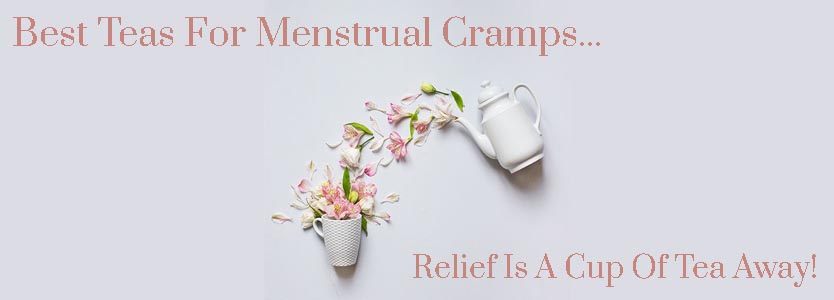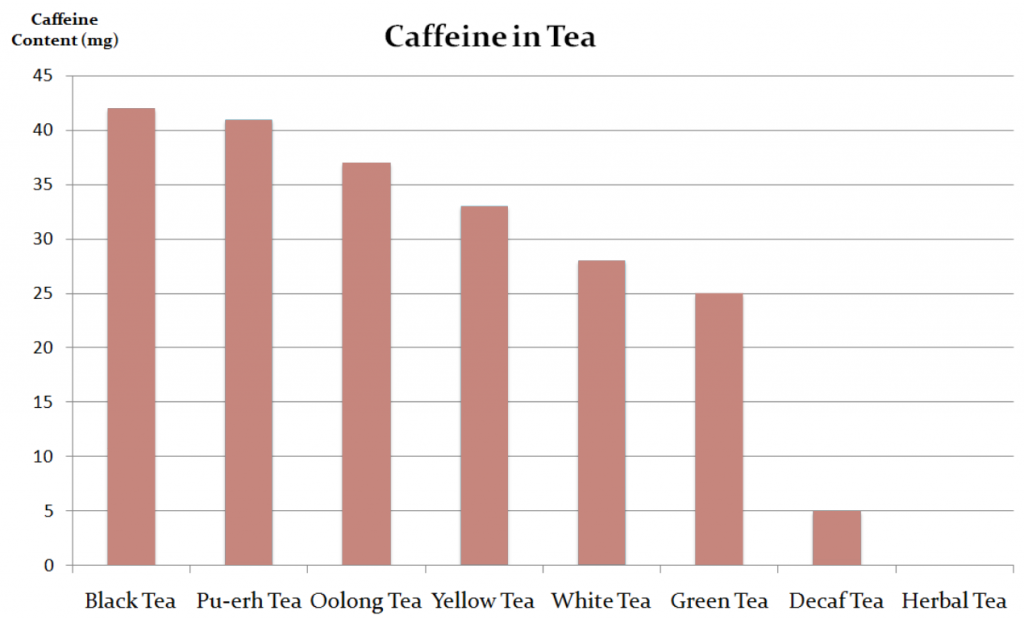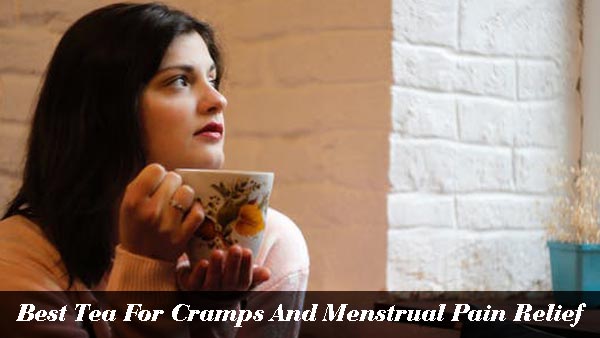Women can experience many symptoms during their period. One of the most common symptoms you may be experiencing is cramps. After all, searching for some relief is probably how you ended up on this page as you search for what the best tea for cramps might be. Luckily, their really are some great tea options to help give you some relief during the worst days of your menstrual cycle.
Before we get to all of the different tea options we’d like to strongly suggest you consider a loose leaf tea. Loose leaf tea has many benefits to the tea’s you’ll find in a tea bag. Due to the benefits of loose tea you might find that it’ll help with your menstrual cramps more than tea from a tea bag. Hint: not only are the tea leaves fresher, but they’re also a lot better quality!
What Causes Menstrual Cramps?
We don’t want to pretend like we’re a doctor. But in order to understand what the best tea for cramps is and why it can help we should understand what causes menstrual cramps in the first place. Also, if you keep reading we’re also going to highlight some teas to avoid and why they should be avoided.

Menstrual cramps (dysmenorrhea) are throbbing or cramping pains in the lower abdomen. During a period, the uterus contracts to help expel its lining. Hormonelike substances (prostaglandins) involved in pain and inflammation trigger the uterine muscle contractions. Higher levels of prostaglandins are associated with more-severe menstrual cramps. You might have already known this. But what you might not have known is that when the lining sheds, the uterus contracts to help release it, and this is what’s causing the cramps you might be experiencing.
For some women, the discomfort is merely annoying. For others, menstrual cramps can be severe enough to interfere with everyday activities for a few days every month. No matter the discomfort you’re in you’re here because you need some relief! So now that we’re done playing doctor let’s at least start getting down to the nitty gritty. Let’s first discuss something you want to avoid before we get to the best tea for cramps. You want to avoid caffeine!
Avoid Teas With Caffeine
Caffeine causes a constriction of blood vessels. So this would include the uterine blood vessels. And the constriction of these blood vessels will cause more painful cramps. When you mix caffeine with the already contracting blood vessels it would make sense to not squeeze anymore if you don’t have to. Maybe this makes a little more sense now why we explained what the case of menstrual cramps is earlier?
Below is a list and chart of the kind of teas that you’ll want to avoid because of caffeine. The chart will also show the types of tea that you’ll want to seek out as the best tea for cramps.
Top 5 Teas To Avoid While On Your Period:
- Black Tea: 40-45 mg of caffeine
- Pu-erh Tea: 40-45 mg of caffeine
- Oolong Tea: 35-40 mg of caffeine
- Yellow Tea: 30-35 mg of caffeine
- White Tea: 25-30 mg of caffeine

Data Sources:Caffeine Informer (https://www.caffeineinformer.com/the-caffeine-database
Best Tea For Cramps
So now that we know we want to avoid caffeine we can start a bigger discussion on what the best tea for cramps is. We also know why we want to stick with herbal teas.
1. Chamomile Tea
Some of you might not like the smell or taste of chamomile tea. But you might find that it could work wonders for menstrual pain relief. For those of you that do like chamomile tea than you should try this! In fact, chamomile tea has been used for thousands of years as a home remedy for anything from menstrual cramps to fighting infections due to colds.
Chamomile is a pleasant and soothing herb. It has gentle sedative properties that relaxes and soothes your muscles. Also, it has anti-inflammatory and antispasmodic effects which will also help with cramps. This means that it will also relax and soothe the muscle that lines the wall of your uterus. Chamomile is easy to consume as a tea brewed from the dried flowers of the chamomile plant.
But we also want to give one little warning about Chamomile. It’s a member of the daisy family and can cause allergic hay fever-like reactions in susceptible people. Please note this before you try this tea.
2. Red Raspberry Leaf Tea AKA Raspberry Leaf Tea
Just to get this out of the way – there is no difference between red raspberry leaf tea and raspberry leaf tea. But Red Raspberry leaf tea is exactly what it sounds like. It’s a tea that’s made from the leaves of red raspberries. Raspberry leaf tea has been used for centuries by midwives to help women at various points during their fertility cycle. In fact, many herbalists have dubbed raspberry leaf tea as “the women’s herb.”
The combination of fragarine, an alkaloid in raspberries, and tannins, a naturally occurring polyphenol often found in wine, are known for treating PMS symptoms. Hell, I think I was just sold because there’s a commonality to wine! Anyway, these parts of the red raspberry leaf tea are particularly beneficial when it comes to cramping, vomiting, nausea, and diarrhea.
Let’s break this down even a little bit further now. Fragarine has been known to help tone and tighten muscles in the pelvic region. This means that the fragarine will help with menstrual relief. You should have some soothing from cramps caused by muscle spasms. Meanwhile, tannins are believed to strengthen the uterus. This should help mitigate heavy and irregular bleeding during the menstrual cycle.
Lastly, calcium and magnesium can come into play. These minerals are also known to help with muscle spasms which means that you would get some relief from PMS cramping.
3. Peppermint Tea
Peppermint tea is another tea that has been used for centuries for medicinal purposes. Hmmm…noticing a trend? The secret ingredient for peppermint tea is the menthol. Menthol has anti-spasmodic effects, which help it to treat an upset stomach, stress, and relaxes muscles that are spasming. This means that it will also help with your menstrual cramps. Bottom line, here, is that peppermint is a great muscle relaxer.
Peppermint is also great for the tummy and your digestive system. If you’re at all gassy while you’re on your period the peppermint will help with that, as well. It’ll also improve the passage of food and swallowed air through the digestive tract, allowing them to go through smoothly and without pain or discomfort. The volatile oils in peppermint also stimulate the gallbladder to release bile that your body uses to digest fats.
In addition, studies found peppermint reduces nausea and diarrhea associated with menstruation–benefits you wouldn’t see with over-the-counter pain pills. While peppermint is generally safe for most people, it can cause heartburn in some folks and interact with some medications, such as certain antacids. In the end, you’ll at least have some minty fresh breath!
4. Fennel Tea
Some say that fennel tea is the best medicine for menstrual cramps. However, we must say that it’ll take a little more work to make fennel tea. But before we get into that let’s get into some of the benefits of fennel tea.
The antispasmodic and phytoestrogenic properties of fennel seeds helps to relax the muscles in the uterus which relieves the cramping. It’ll also release muscle tension, soothe inflammation, and ease aches and pains. Put all of this together and you will have menstrual pain relief. But best of all, fennel seeds will not only help with your abdominal cramps, but it’ll also improve your mood and help combat bloating and indigestion. As you know, these are other symptoms accompanying your menstrual cycle.
Now let’s talk about how to make fennel tea. To make fennel tea, pour 1 cup of water to a vessel and add 1 teaspoon of fennel seeds. Let it simmer in low flame for 5 minutes with a lid on it. Turn off the flame and strain. Have it warm several times a day.
5. Cinnamon Tea
Cinnamon is a popular spice used all over the world, and is a first-class antiseptic and digestive aid. It is rich in antioxidants, and has a mild analgesic effect which may be why one of its traditional uses is for treating pain, sore throats, fevers and inflammation. It is considered a natural pain reliever and helps with inflammation so it is another good option to relieve cramping.
For anyone taking prescription blood thinners, be aware that cinnamon also contains some coumarin, a natural blood thinner.
Now let’s learn how to make tea using cinnamon. Because cinnamon is a bark it should be slow boiled release its beneficial components. If you want to make cinnamon tea for yourself try gently boiling a Ceylon cinnamon stick (no need to break it up) in 1½ cups of water for 15-20 minutes, allow to cool for 10 minutes. Strain and drink neat or with some added honey and/or milk.
Final Thoughts On The Best Tea For Cramps
We can see a trend where tea has been used for medicinal purposes for centuries. All of the teas we mentioned have act as a natural medication to relieve menstrual pain. Actually, tea also has a lot of additional benefits from increasing mental awareness, helping with anxiety and sleep, cold relief, and much more. So before you reach for the over-the-counter pain medications you should try out a tea.
Drinking more hot liquids consistently will promote blood flow to the pelvic area which will help the pelvic muscles relax. So you should drink tea leading up to your period, and 2 to 3 times a day during your period. It would be beneficial to drink tea consistently as a habit.
As you search for the best tea for cramps we recommend that you try each tea on our list. Each person is different so the tea that works for one woman may not work for the next. We hope you find all the relief you need!

